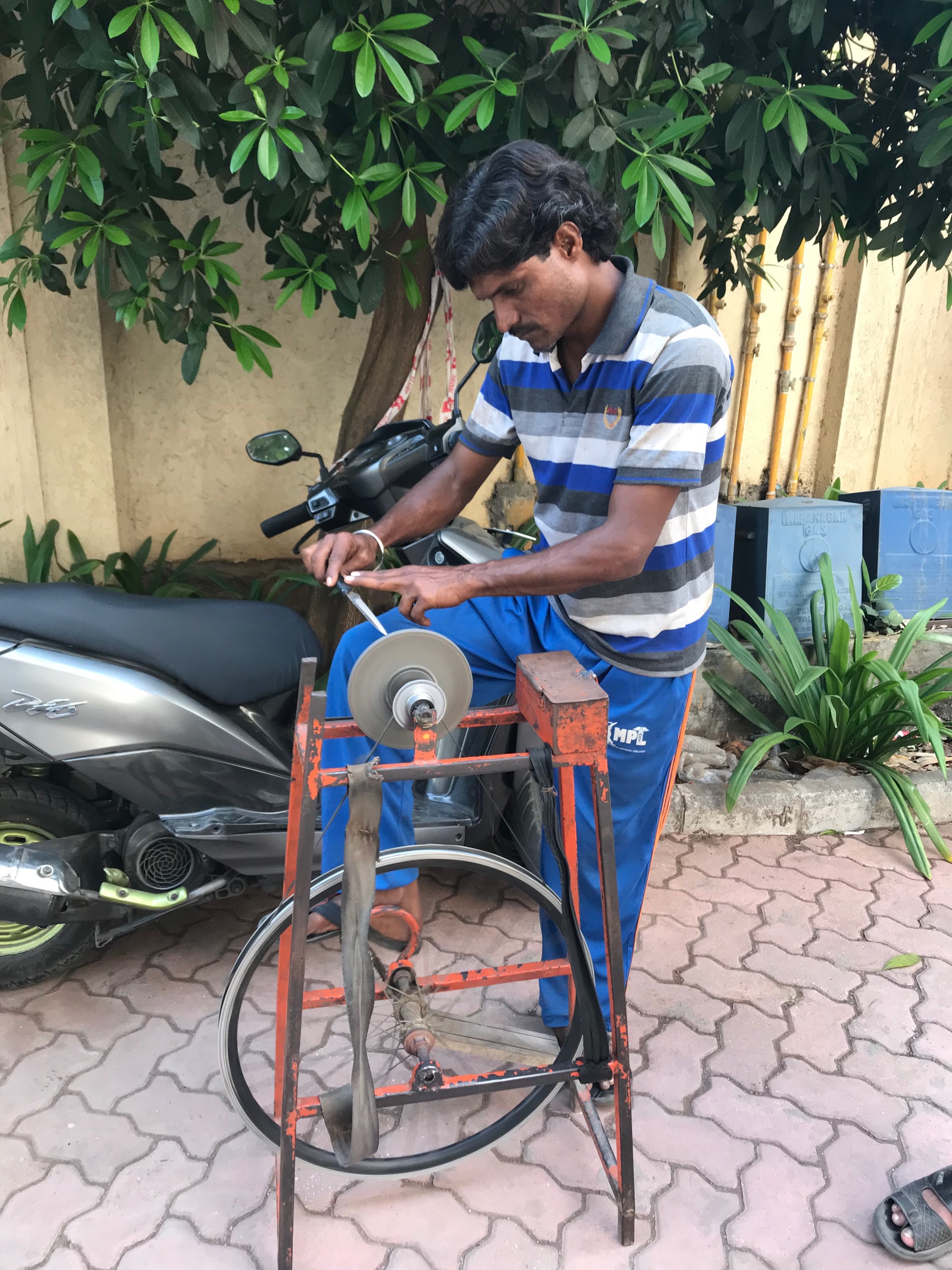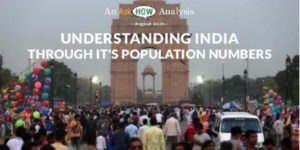Economic Migration in India – The who, the why and other good stufffeatured
How many people in India migrate in search of work? Who are they? Where do they come from and where do they go? In my last blog in this series on population in India, I looked at the difference in fertility rates across states, and made the easy prediction that migration for work from North and East to the West and South is likely to continue for decades. I have done a deeper dive into this topic in this post.
Two sources helped me considerably. They are the Economic Survey of India, 2016-17 which has a chapter on economic migration and the book India Moving, by Chinmay Tumbe.

How many move?
The 2011 census estimated the total number of migrants due to economic reasons to be 51 Million. This is believed to be an underestimate. One reason is definition. Earlier official surveys defined people as migrants only if they were outside their usual residence for more than six months. As a lot of of economic migration is circular – that is is people move for employment for a short period and then return home – official surveys did not count such migrants fully. Many others are omitted because their residential sites are not enumerated in the destination regions. Others may self identify themselves as non migrants rather than returning migrants in the source region. Furthermore, women marrying economic migrants and then moving may state marriage as their reason for moving rather than employment.
The economic survey itself made two estimates. The first method was Cohort- based Migration Metric (CMM). In this method, the 10-19 year-old cohort in an initial census period and the 20-29 year- old cohort in the same area a decade later were compared after correcting for mortality effects. The difference was then scaled up to arrive at the figure for all age groups. According to this method, the annual inter-state labour mobility averaged 5-6 million people between 2001 and 2011, yielding an inter-state migrant population of about 60 million and an inter-district migration as high as 80 million.
In the second method, the researchers obtained the number of unreserved tickets between every pair of stations from Indian Railways. The net annual flows of unreserved passenger travel was used as a proxy for work-related migrant flow. This method estimated an annual flow of around 9 Million between states, nearly double the estimate of CMM method.
Of course, it should be remembered that a lot of migration is from villages to a city in the same district, which would only add to the above figures of economic migrants. Also, even these methods do not fully take into account the circulating nature of migration. A villager in Uttar Pradesh may work in Surat for four months as a contract worker and then go back to the village for the remaining part of the year. His job may be taken over by another migrant and these methods would count only one of them. Finally, many regions act as both source and destination for migration. For example, Professor Tumbe believes that there are 2 Million North Indians in Kerala and at the same time many people migrate from Kerala to other parts of India and abroad in search of employment. Another example is Goa, where migrants can be seen working in many tourism related jobs while local born have been migrating out for decades. The CMM method especially, would net off these migrations.
Given all these challenges, estimates of number of economic migrants varies quite a bit. Different research papers have estimated the share of economic migrants between 17% and 29% of our workforce. Even at 20%, the absolute number comes around 100 Million!
Where do they come from?
One of the startling insights of the book, India Moving, is that there are regions in India that have been sources of outmigration for more than a century. They are the coastal regions, especially the West coast, the Bhojpuri speaking regions of Uttar Pradesh and Bihar, and other regions like Punjab and parts of Chhattisgarh and Odisha. etc. The migration from these places has been to parts of India as well as overseas.
High population densities and relatively low prosperity may be the trigger for the initial migration but other factors become important with time. These are access to migration routes and to pre existing migration networks and a culture that looks up to outmigration. From India moving,
“On many indicators, Bihar fares worse than sub Saharan Africa whereas Kerala mirrors countries in Europe. And yet, both states experience similar rates of outmigration, defying simplistic assumptions that poverty is the main driver of migration, especially from rural to urban areas. What unites Bihar and Kerala is an extremely high rate of rural population density that simply cannot support enough livelihood in agriculture sector.”
And further on
“But as a general pattern, regions with high population densities, often sustained by easy access to water and pre existing migratory networks either through military service or global trade, were crucial factors in determining why some regions were more likely to participate in the wave than others.”
Who moves?
An overwhelming proportion of economic migrants is male. The survey states that at least 80% of the people who move are men. Why do women not migrate? It could be because of the cultural norms of the source region or the fact that housing in the destination regions is costly or just the fact that there is no demand for female labourers in the destination regions. One notable exception is the number of women who move from Kerala as nursing professionals!
Migration also depends a lot on caste and kin networks. If a few individuals from a region get good employment opportunities in another region, they facilitate the migration of members of their family and extended caste networks. This facilitation could be in the form of contacts with potential employers, places to live and the comfort of connection with people of home culture. Thus, not only are economic migrants across the country from the same regions, but also in a particular destination / employment, you would see people from the same village / cast combinations.
Does the source region benefit?
Economic migrants would send money back home and that should benefit the region, right? The record is mixed. The Udipi region is the second best in Karnataka on development indicators and sees persistent outmigration. Goa is one of the more prosperous states and also has a very high level of outmigration for employment. A lot of the prosperity of these regions may be from remittances of the migrants. The poster example of benefiting from remittances however, is Kerala. It has been estimated that nearly 30% of Keral GDP is inbound remittance!
However, the Bhojpuri speaking region of UP and Bihar does not seem to have benefited as much from migration. The difference could be due to governance or due to the amount of remittances. The remittance market in India is estimated to be $70 Billion for international migration but only $20 Billion for internal migration. Nearly 40% of international remittance flows are concentrated in Kerala, Punjab and Goa whereas domestic remittance dependency is high in UP, Bihar, Rajasthan and Odisha.
Where do they go?
The destination regions have changed over the centuries and may be in our outside India and depend totally on the available economic opportunities. Kolkata, Surat and Mumbai have been destinations for a long time. Before the administrative division of British India, the erstwhile Burma was a popular destination. By the 1930s 7% of the total population of Burma and over half of the population of Rangoon city was of Indian origin. In more recent times, New Delhi has become a big magnet for migrants as have destinations in South India. Once a place has a culture of outmigration, people there find the best employment opportunities and go there.
Of course, a lot of Economic Migration was to far flung places across the globe like Fiji, islands in Caribbian and Mauritius. More recently, countries in the middle east have attracted migrants. In many of these places, people of Indian origin now outnumber others.
In summary, economic migration in India is large scale and male dominated. A few regions across the country have been sources of outmigration for decades and centuries now. The destinations for these migrants keeps changing with time – people go where there are job opportunities.
Postscript
My understanding of economic migration has been significantly increased from my reading of the book India Moving. However, I would do the book an injustice if I left you with the impression that it was only about economic migration within India. The book discusses the history of migration, diaspora, movement of people due to partition, migration of business communities like the marwaris and the Chettiars and many related topics and I highly recommend it. As an illustration of the breadth of the book, I leave you with three nuggets.
“In every decade between 1971 and 2011, India was, in fact, a country of net immigration.”
“In April 1971, India received about 60,000 refugees on an average on a daily basis. In May, the daily average exceeded a 1,00,000. In June, it was a little under 70,000. Over 6 Million refugees had crossed over in just three months. Nearly 4 Million more refugees would arrive in the next four months.”
“What are the two constants of the Indian diaspora? …The use of water, not toilet paper to perform ablutions and the pressure cooker…”
This is the fourth in a series on population. The first three articles can be found here
- Everything you wanted to know about population (but were too lazy to Google).
- Are the Acche Din of population growth already here?
- Chhath – the new national festival?
Author –
Yogesh Upadhyaya
(Yogesh Upadhyaya is one of the founders of AskHow India. Blogs are personal views.)
You can follow AskHow India (@AskHowIndia) or me (@Uppi89) on twitter or me on LinkedIn



